Aaron Elson's Blog, page 15
May 23, 2014
Aunt Libby and the Canteen
 Elizabeth "Libby" Lippincott Pitner with Lt. Wallace Lippincott Jr.'s canteen.
Elizabeth "Libby" Lippincott Pitner with Lt. Wallace Lippincott Jr.'s canteen.In 1971 I spent nine months in Paris. A buddy of mine from college was there, too. He was going to be the next Hemingway and I was going to be the next Fitzgerald. It didn't work out that way, but I have no regrets. Whenever my friend got upset with a Frenchman, he'd say "My uncle liberated you!"While I was in Paris I courted a young woman of a different nationality. Wanting to appear worldly I suggested that we go to the Louvre. So we're walking from gallery to gallery and there are all these famous paintings. All of a sudden there I am standing face to face with the Mona Lisa."Wow," I said. "It's much smaller than I imagined.""Oh, you Americans," the young lady said. "You think everything is as big as Texas."For our next date, hoping to rehabilitate my knowledge of art, I suggested we go to the Rodin Museum.We walk through the first gallery and out into the yard, and there in front of us is a working model of the Thinker. It's only about two feet tall. And I thought, gee, that's much smaller than I imagined it would be. I didn't say a word.Which brings me to earlier this month, when I drove from New Britain to Canonsburg, Pa., just outside Pittsburgh, to see an artifact from World War II, which I imagined would be much bigger than it actually was. But I'm getting ahead of myself.Last December, I called Vern Schmidt, a veteran of the 90th Infantry Division who's in one of my books. I needed some information about his brother, who was a prisoner of war, for another project I was working on. We talked for half an hour and I was about to hang up when Vern said "By the way..."By the way, Vern and his wife had been to Europe where they have a friend named Norbert Morbe. Norbert is an avid collector of World War II artifacts. You can find him on Facebook, where his page is like a virtual museum. A few years ago he found a canteen in the woods with a name, "Lippincott, Wal," and a serial number etched into its side. Lieutenant Wallace Lippincott was killed in the Battle of the Bulge, but Norbert's efforts to find anyone in his family so he could return the canteen proved fruitless. So he asked Vern to take the canteen home to Fresno, Calif., and see what he could find. He, too, wasn't having any luck.
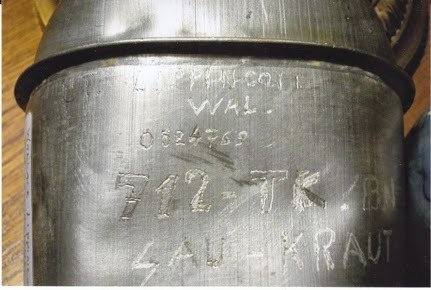 Lieutenant Lippincott's Canteen My father didn't know Lieutenant Lippincott, but they were both in A Company of the 712th Tank Battalion. I had researched the incident in which Lippincott and two members of his crew were killed on Jan. 14, 1945, near Sonlez, Luxembourg.Lippincott's widow married a Navy veteran and became Libby Pitner; hence the difficulty in locating her. About ten years ago the lieutenant's great-nephew, Ted Nobles, was researching his family's genealogy and contacted me. I sent him some information. I still had his email, but it was no longer active. Then I found Ted on Facebook.Vern sent Ted the canteen. Columnist Dan Rubin of the Philadelphia Inquirer covered the story -- the Lippincotts had lived in Swarthmore, Pa. -- and Ted said he met Mrs. Pitner many years ago but didn't remember her last name or even know if she was still alive. At the end of the article, he said, "Aunt Libby, where are you."Libby Pitner had three children by her second marriage, to Craton Pitner, who has since passed away. The day the article came out, she answered the telephone and heard "Grandma, you're on the front page of the Inquirer."Ted Nobles planned to drive the canteen out to his great Aunt Libby, but the harsh winter and car trouble kept him from making the trip from Delaware, so he finally FedExed it. Vern Schmidt decided to fly from Fresno to Pittsburgh so he could meet Aunt Libby and see her with the canteen, so I agreed to drive out and meet them as well.I met Mrs. Pitner in the lobby of the assisted living facility where she lives, and we went up to her room to talk. There on the bed was what seemed to me to be a pretty small box, about the size an iPad or a hardcover book might come in."That's the canteen?" I said. "I imagined it would be bigger."Nevertheless, there was no putting a size on the amount of closure touching the canteen brought to Elizabeth Pitner. She and Wally were only married for 11 months, but she never got over his loss. She had never received any of his effects.Libby and I talked for almost four hours. She had an album with photos from their courtship and marriage -- they spent their honeymoon in Atlantic City during a nor'easter that tore the canvas top off their Fort Phaeton. She attended a reunion of the tank battalion in 1998, when the unit's monument was dedicated, containing her husband's name and those of 97 others who were killed in action -- two more have since been added. Sam MacFarland, who was her husband's platoon sergeant, sent her a blow-up of a photo showing Wally's head sticking out of his hatch. The picture was taken in Bavigne, Luxembourg, a few days before he was killed.
Lieutenant Lippincott's Canteen My father didn't know Lieutenant Lippincott, but they were both in A Company of the 712th Tank Battalion. I had researched the incident in which Lippincott and two members of his crew were killed on Jan. 14, 1945, near Sonlez, Luxembourg.Lippincott's widow married a Navy veteran and became Libby Pitner; hence the difficulty in locating her. About ten years ago the lieutenant's great-nephew, Ted Nobles, was researching his family's genealogy and contacted me. I sent him some information. I still had his email, but it was no longer active. Then I found Ted on Facebook.Vern sent Ted the canteen. Columnist Dan Rubin of the Philadelphia Inquirer covered the story -- the Lippincotts had lived in Swarthmore, Pa. -- and Ted said he met Mrs. Pitner many years ago but didn't remember her last name or even know if she was still alive. At the end of the article, he said, "Aunt Libby, where are you."Libby Pitner had three children by her second marriage, to Craton Pitner, who has since passed away. The day the article came out, she answered the telephone and heard "Grandma, you're on the front page of the Inquirer."Ted Nobles planned to drive the canteen out to his great Aunt Libby, but the harsh winter and car trouble kept him from making the trip from Delaware, so he finally FedExed it. Vern Schmidt decided to fly from Fresno to Pittsburgh so he could meet Aunt Libby and see her with the canteen, so I agreed to drive out and meet them as well.I met Mrs. Pitner in the lobby of the assisted living facility where she lives, and we went up to her room to talk. There on the bed was what seemed to me to be a pretty small box, about the size an iPad or a hardcover book might come in."That's the canteen?" I said. "I imagined it would be bigger."Nevertheless, there was no putting a size on the amount of closure touching the canteen brought to Elizabeth Pitner. She and Wally were only married for 11 months, but she never got over his loss. She had never received any of his effects.Libby and I talked for almost four hours. She had an album with photos from their courtship and marriage -- they spent their honeymoon in Atlantic City during a nor'easter that tore the canvas top off their Fort Phaeton. She attended a reunion of the tank battalion in 1998, when the unit's monument was dedicated, containing her husband's name and those of 97 others who were killed in action -- two more have since been added. Sam MacFarland, who was her husband's platoon sergeant, sent her a blow-up of a photo showing Wally's head sticking out of his hatch. The picture was taken in Bavigne, Luxembourg, a few days before he was killed.
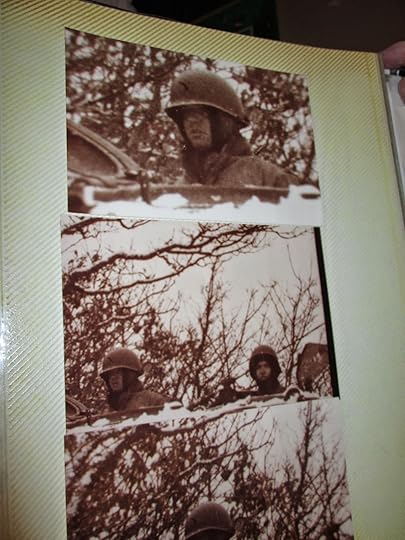 Lt. Wallace Lippincott, Jr. (top)
Lt. Wallace Lippincott, Jr. (top)
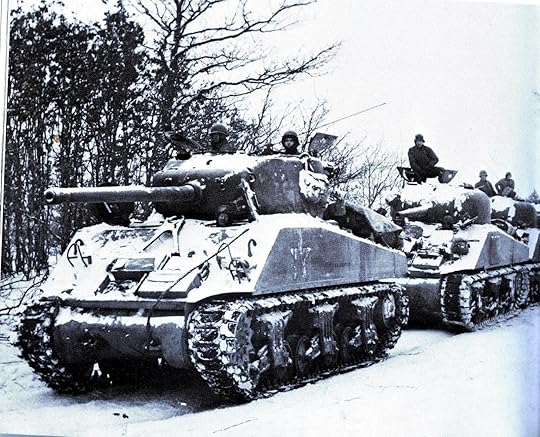 Lt. Lippincott's tank (front) going into the Battle of the Bulge.
Lt. Lippincott's tank (front) going into the Battle of the Bulge.She also kept every letter Wally wrote, and read to me from a few of them, removing them randomly from their envelopes. Wally was a Quaker, and in the letters he addressed her as "thee." I wondered if he spoke that way with his crew, but I doubt it."Today I saw a peculiar sight," he wrote from England, "and that was two white English girls walking down the street with two Negroes. There is no racial discrimination whatsoever over here, and the blacks are accepted. Some of the Southern officers almost blow their tops when they see this, but all have been warned by higher command to do nothing about it.""By the way," the letter concluded, "happy 11th anniversary.""Only 11 months," Libby interjected."And just think, soon it will be one year," the letter continued. "I sure wish I could be home for it. Never before have I been homesick, but I sure have a case of it for thee now. Hoping to see thee soon. Lots of love and kisses, thy husband, Wallace."
In a letter dated Jan. 6, 1945, Wally wrote: "It is a good feeling to know that we are building up a little nest egg in the bank for after the war. I can think of no greater pleasure than that of buying a place of our own and going round furnishing the house.. Dreams such as these make this mess seem worthwhile. If I didn't have something to come home to, this war would seem pointless to me. I suppose that is a selfish attitude to take but I almost consider it a personal fight against those who have deprived me of doing the things a man deserves most: having a home and a family to provide for. ... Lots of love and kisses, thy loving husband Wallace."Wally was killed eight days later. "That may be a letter I got after he died," Libby said.Libby had another photo which is prominent in the battalion's history. It shows tank driver Bob "Big Andy" Anderson, a farmboy from Illinois, butchering a cow and handing out steaks.My ears almost popped out of my head when Libby read a passage from a letter written Jan. 4."Another day has gone by without much of importance happening," Wally wrote, "with the exception that I am so full of steak I can hardly maneuver."
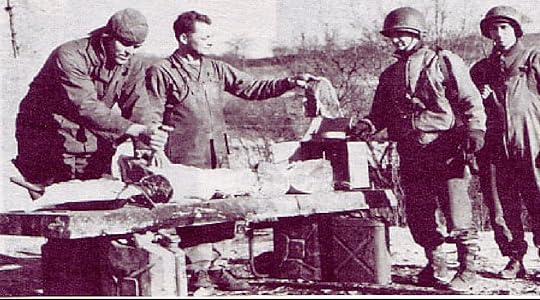 Big Andy butchers a cow.
(An earlier post about Lieutenant Lippincott's canteen)
Big Andy butchers a cow.
(An earlier post about Lieutenant Lippincott's canteen)
Published on May 23, 2014 10:03
April 18, 2014
On the Passing of Frank Bertram
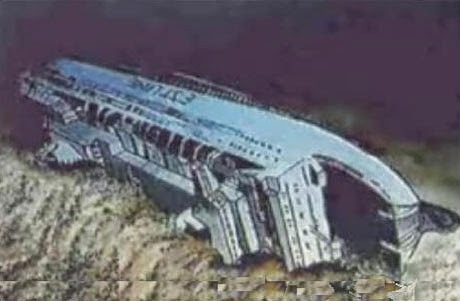 The sinking of the Estonia, Sept. 28, 1994 (illustration from redicecreations.com) At first it seemed like a bizarre coincidence that Frank Bertram, one of the "Core 4" of the Kassel Mission Historical Society -- George Collar, Bill Dewey and Walter Hassenpflug being the others -- should pass away, shortly after his 94th birthday, on the second or third day of the South Korean ferry disaster.
The sinking of the Estonia, Sept. 28, 1994 (illustration from redicecreations.com) At first it seemed like a bizarre coincidence that Frank Bertram, one of the "Core 4" of the Kassel Mission Historical Society -- George Collar, Bill Dewey and Walter Hassenpflug being the others -- should pass away, shortly after his 94th birthday, on the second or third day of the South Korean ferry disaster.I say coincidence because when I visited Walter Hassenpflug in 1999, he gave me a photocopy of an article that appeared in Stars & Stripes. I no longer have the photocopy, I may have loaned it to a researcher, but it was dated either Sept. 29 or 30 of 1994, and it had a big article about the ceremony at the Kassel Mission Memorial marking the 50th anniversary of that Sept. 27, 1944 battle.
There were, if I remember the article correctly, 600 people at the memorial, American survivors of the battle and their families, former German fighter pilots who took part in the battle, civilians who were children at the time. The article told how three of the people in attendance -- one American, Jima Schaen Sparks, and two Germans -- were born after their fathers died in the skies overhead.
The article would have made the front page of the Stars & Stripes that day were it not for another ferry disaster, the sinking of the Estonia in the Baltic Sea with a loss of, according to Wikipedia, 852 lives, making if the worst peacetime maritime disaster since the sinking of the Titanic.
For a while, questions swirled about the Kassel Mission -- was it due to a navigational error that the 35 Liberators of the 445th Bomb Group flew off course? Was there a secret target in the city of Goettingen? Were the other factors at play? Thanks to the exhaustive research of Linda Dewey, Bill's daughter, most of those questions have been answered, with the navigational error remaining the most plausible explanation. But who knew that a brief Internet search for information about the then-fresh ferry disaster that shared the issue of Stars & Stripes with the 50th anniversary of the Kassel Mission in 1994 would spawn conspiracy theories that make the grassy knoll look like an anthill. There was a big NATO exercise going on at the time; a day before the disaster a terror drill involving two bombs took place aboard the Estonia; Swedish phone lines were jammed at the time the first distress calls went out; 150 smuggled Iraqi Kurds may have been hidden in a truck, which would have increased the death toll to 1,000; contraband advanced Soviet weapons were on the Estonia; and as recently as last year the NSA and CIA were stonewalling the author of a 1996 book, "The Hole," questioning the official findings of the Swedish inquiry into the disaster.
So I asked myself, Coincidence? I don't think so.
Linda Dewey has noted that without Frank, there wouldn't be a Kassel Mission Memorial, and there might not even be a KMHS. It wasn't until Walter Hassenpflug -- who as a 12 year old boy captured an injured Bertram after the 19-year-old navigator bailed out of his crippled B-24 -- located him in the 1980s and the two got together, that the idea of a memorial to the fallen on both sides began to take shape.
I never interviewed Frank, and only met him once, at a reunion of the 8th Air Force Historical Society in Savannah, but after I called him in 1999 he sat in his car, at least I think it was his car, with, I think he said two tape recorders, and just spoke into them. He sent me the two tapes he made, one 90 minutes and the other either 100 or 120 minutes. He just talked and talked. I transcribed the two tapes and used a narrative drawn from the transcript in my book "9 Lives." Initially I wanted to write a book solely about the Kassel Mission, but I realized I was just getting started, so I included three accounts of the mission, those of George Collar, Frank, and Kay Brainard Hutchins, whose brother Newell survived bailing out of his plane but was murdered on the ground by civilians.
Last night I messaged Jima Schaen Sparks with a question about the Stars & Stripes article because I knew she was mentioned in it, and she replied with an anecdote about Frank, and how they met at the Frankfurt airport on their way to the ceremony marking the dedication of the monument.
"It's really sad to hear of Frank Bertram," she wrote. "I recall so clearly when we met ... 1990 in the Frankfurt airport. While wandering around looking for the group meeting the bus to Bad Hersfeld, I saw another confused wanderer, obviously American, wearing a yellow sweater and khakis, a tall, handsome man with a military bearing.
"We made eye contact, and after a short conversation learned we were both looking for the Kassel Mission group. He then inquired about my connection, saying I was a bit young to be the wife of one of the 'ol' guys.' I introduced myself, telling him that my father, Jim Schaen, was one of those killed on the mission.
"He appeared speechless for a time, and just stared at me with eyes brimming with tears. Then he told me that he was with Jim at mail call when he received the letter from Mother telling him she was pregnant, just a few weeks before the mission, I believe.
"He was the first person I'd ever met, other than family, who had known Jim."
For more information and accounts of the Kassel Mission, please visit Kasselmission.com
Published on April 18, 2014 22:53
February 25, 2014
My Monuments Men, Part 2
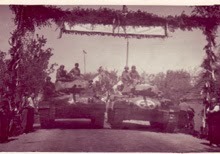 The 712th Tank Bn. entering Malybor, Czechoslovakia
The 712th Tank Bn. entering Malybor, Czechoslovakia(My Monuments Men, Part 1) Harlo J. "Jack" Sheppard was the company commander of C Company, 712th Tank Battalion, from Normandy until the end of the war in Europe. Following is an excerpt from my 1993 interview with Sheppard in which he talks about the Merkers salt mine, among other things. The battalion was assigned to guard the salt mine, which is depicted in the movie "Monuments Men," following its discovery on April 4, 1945.
The guarding of the mine, incidentally, was sandwiched between two other major events in the battalion's history: the explosion that demolished the A Company headquarters on April 3rd, killing five members of the battalion, including Lt. Edward L. Forrest; and the liberation of the Flossenburg concentration camp by the 90th Infantry Division, to which the 712th was attached, on April 23rd.
Part of my interview with Sheppard consisted of me reading from a narrative he wrote for his children and grandchildren, with occasional comments he made elaborating on what he wrote.
I have not yet finished transcribing the interview, having stopped about halfway through to move on to complete writing a book in which I used a narrative drawn from that first half of the interview. I recently made an audiobook of the full interview, "Reflections of a Tank Company Commander." Following is a transcription of Track 39 from that audiobook:
Aaron Elson (reading from Jack Sheppard's book: "On 4 April near Ettenhausen, first platoon lost one tank to a panzerfaust ..."
Jack Sheppard: Do you know what a panzerfaust is?
Aaron Elson: Yes.
Jack Sheppard: Okay, it's not a bazooka.
Aaron Elson: It's a self-propelled ...
Jack Sheppard: It has a charge in it, and it goes about 100 feet at the most. You stand up and you push the trigger and it goes. It's like a football coming at you. It's about the size of a football, with a stick out the back of it, and the stick is a tube that has the propellant in it. They come out of cellar windows, second story windows, haystacks, foxholes. If they hit the side of a tank it penetrates. If you're lucky it would hit down around the track. In Berlin they had Hitler jugend, Hitler youths, and that's all they had, every one of them, to give their life for one tank, that's what was expected of them, when the Russians came in. Fourteen years old, ten years old.
Aaron Elson: (reading) "After the one tank was lost to a panzerfaust, second platoon lost two tanks to panzerfausts. No wounded. Seventeen prisoners were taken. Merkers. C Company and 357 were busy guarding a salt mine found by a German-speaking MP who overheard some women talking about a salt mine loaded with money. Gold, silver, priceless paintings, etc. Every brass officer from Eisenhower on down came to look. The GIs were used to bring the stuff to the surface and truck it away. Officers were used as guards ..."
Jack Sheppard: To keep the enlisted men from stealing it.
Aaron Elson: What do you remember about that?
Jack Sheppard: Well, there was one battalion of infantry and my tank company left there to guard that. I don't remember a whole lot about it because they didn't bother the company commanders, but everybody and their brother went down in that mine to look at the stuff. I don't know of anybody that got away with anything, although one tank crewman, I can't remember who it was, later said some infantryman said to him, "Hey, Mac, can you give me a ride with this bag of gold? It's getting awful heavy." But the paintings, oh my goodness, all kinds of famous paintings. And money. They had everything there, from counterfeit English pounds and counterfeit American money, real American money, real English money, German money, silver coins. That was their main stockpile. That took several days, and it was kind of a vacation because nobody was shooting at you."
Aaron Elson: (reading) "On 16 April we arrived at Grafenthal and a distance of 100 miles. Next day 20 miles. Next 12 miles, next 25 miles ..." You were moving.
Jack Sheppard: Yes.
Aaron Elson: Where was it that C Company liberated the prisoners from the 106th Infantry Division from the Bulge? Do you remember that?
Jack Sheppard: No. The 90th ran into one of the extermination camps. I never saw it. All I saw was two men on the side of the road, and they looked like they couldn't hardly make it. So we stopped and we heard about this stuff when we stopped, and gave them some food and told them not to eat it too fast or it would make them sick. And they told a little story of two Germans they saw beaten to death. One of them was a sergeant in charge of the dogs and the other one was the first sergeant of the camp, and the prisoners beat them to death. And they said that they hated to admit it, but those two guys stood there at attention until they were knocked to the ground. Didn't cower and didn't ask for mercy, nothing. They knew they were gonna die, evidently.
Aaron Elson: (reading) "4 May. C Company together with 357 in Corps reserve. 5 May crossed border into Czechoslovakia." When was VE Day?
Jack Sheppard: A little later on.
Aaron Elson: (reading): "Forty miles. Next day 20 miles, next 25 miles. 8 May holding in place at Malybor where C Company released from 357 as the war was over. At Malybor you never saw such happy people. They gave us a flag which is now in storage at the Patton Museum at Fort Knox. The flag said in Czech "Thank you for our liberation, Malybor." The volunteer fire department helped wash our tanks with hoses. A dance with music was held that night. The town was small, one or two hundred people. In a few days the order was given for us to move to Amberg, Germany." At Malybor I think Rossi said they put up a Maypole?
Jack Sheppard: I've got a picture of it. At the entrance to the town they had an archway with flowers and leaves, and there was one girl in that town the men couldn't keep their eye off, she was always coming down to the river to wash clothes. She was a gorgeous blonde. The men hadn't seen a gorgeous blonde in a long time. She attracted attention. But those people were most happy. As soon as we got there they started digging up arms and ammunition that they had buried in case they ever needed them, and they were overjoyed. They couldn't do enough for us. They baked a cake for us, and they didn't have anything to bake cakes with. They said they were glad the Americans were there. They said the Germans, when they ride down the street they kill chickens, and ducks, and pigs, but the Americans, they look out for the animals, they wouldn't run over them. When they found out the Russians were coming in, they hated Russians worse than the Germans I think. They didn't want the Russians. No way. They were pleading.
Aaron Elson: (reading) "In a few days the order was given for us to move to Amberg, Germany as the Russians were to take over Czechoslovakia. People were most unhappy. 15 May, moved to Amberg in two battalion columns, distance 130 miles." In one day you covered 130 miles?
Jack Sheppard: Yes.
Aaron Elson: (reading) "C Company arrived with all vehicles. Some were on their last legs..."0
Jack Sheppard: I'm talking about blowing tread off the bogeys.
Aaron Elson: (reading) "...and some were limping along, but C Company pulled into the tank park parking area complete. On long marches the rubber or steel tracks, we had both, generated so much heat the rubber tread of the road wheels would explode and come off of the steel wheels. Now to sweat out Japan for division. POWs evacuated, 81,088; tanks destroyed, 501; self-propelled guns destroyed, 195." And here are some excerpts from my interviews with other veterans of the 712th: Big Andy (Bob Anderson, tank driver, A Company): The most important thing that I remember after the Battle of the Bulge was when we took this Merkers mine. I was the first tank in there; I won't say the infantry wasn't, but I was the first tank in there, driving the first tank. And as we pulled in there there was a train leaving. And my gunner, Ted Duskin, of course the train was going fast, so we started running alongside and trying to catch it, and Duskin put a shell right in the engine and blew it up. Well, we pulled back to the mine and we sat there until I don't know how long or what. Not knowing what was in it. We didn't know for two or three days after how wealthy some of us could have been.
Bob Rossi (loader, C Company): When we captured the salt mine at Merkers, I was on guard duty there, just before dusk, and these German planes were coming in to strafe. And I'm up on the turret there and I'm on the .50, and I'm firing, in fact they taught us in basic training you took a five to seven-plane lead ahead, so the plane's here, you're firing there, so that by the time the bullet gets there the plane would be there. And I'm firing away and I knew damn well I was gonna hit him, the damn round jumped out of the webbed belt. And by the time I could recover to reload, he was gone. I used to complain to the guys that brought our ammo, "I don't want the webbed belts, I want the metallic link," the metallic link held the round in there, but that webbed belt, the constant vibration of the tanks moving would loosen the ammo.
Reuben "Ruby" Goldstein (tank commander, A Company): Now, when we were at the mine, remember the Merkers salt mine? And we surrounded, all the tanks were around, there was an open field in the back, and McCarthy, from Connecticut, he worked in the kitchen crew, and he was put on guard duty. Now Alfonse Switer, he was the company cook, and he had to go to the bathroom. So he went. McCarthy thought the Germans were coming across the field. It's dark. I was upstairs in the mine building, on the third floor. I had my shoes off, I had my clothes on, I had my .45 and my submachine gun with me. And I hear shots. I come running, everybody, running like crazy, you know, you think something's happening. I come running down, and Al is hollering "Goldie, Goldie, help me, help me." And everything else is quiet. There's no more shots.
McCarthy thought it was the Germans coming and he shot his carbine. In the leg. But he did not know that it was one of our own men. It was what you call friendly fire. Accidental. All right. So they took Al away, and nobody ever saw him again. And the reason they never saw him, because nobody knows what ever happened to him after that. Till the beginning of January of 1946. My brother and I, we bought a second-hand car, and my mother and I, and my brother Mel, he got out of the service after I did. My other brother came out after that. We picked up my aunt in New York and went to Florida. On the way back from Florida we stopped in Pennsylvania. We stopped at a gas station to gas up, and I said, "Why don't I call Al's house." He lived in Manionk. I was there in his house once, on my way back from a furlough I left a day earlier and went to the train station in Philly and Al's sister picked me up at the station. Al was supposed to meet me, but he wasn't there. I got to the train station, I'm looking around, I don't see anybody. A beautiful looking girl comes over to me, and she says, "Are you Goldie?"
I said yes. I said "You must be Al's sister."
She said, "Yes I am. I'm looking for you. He told me to bring you down."
I said, "Bring me where?"
She said, "He's waiting." And where was it? He was in a barroom, sitting at the bar, drinking. And another fellow, a friend of his, an insurance broker, with no legs. He had a little cart on the floor with wheels, just like with roller skates. And he was drinking. She left. And we had a few drinks. These guys were loaded.
Now we're gonna go back to Al's house, he and I. This guy's gonna drive. This insurance fellow without the legs. But he had all the attachments. I says, "No way. I'll drive."
"'You don't know...'"
"I'm driving." I get them in the car and we drove to Al's house. He conked out in the car, the fellow without the legs, fell asleep, and I went up in Al's house, and we stayed there. The next day we had a ball, Al and I. We had a good time over in Conshohocken, at a Polish dance. But anyway, to get back to the story about when he got shot, and when I'm coming back from Florida, I get in the phone booth, and my mother and my aunt and my brother are sitting in the car. And I called up information, I get the number, and I don't know how to say it, to ask for him, I don't know if he's dead or alive. So I got the number, and I asked if this is the Switer residence, and this girl answered, and it was the same girl, his sister. So I told her, "Oh, my god," she says, "how nice to hear from you." You know, she sounded so happy. And all of a sudden, she said "Would you like to talk to Al?" Well, I nearly flipped. I never. He was there. I got on the phone, he says, "You S.B.," he says, "I thought you were dead." I says "I got news for you, I thought you were dead." I says "Nobody's ever heard from you." He was in so many hospitals, he had 26 operations, and his leg was gone all the way. Gangrene had set in. They made him artificial legs, and at first he was walking with the artificial legs with crutches, and then with a cane, and then he could walk on his own. I found that out, we went to a Polish dance one night, and he was dancing with an artificial leg as good as anybody. After I talked to him, that was the last I heard of him is when I talked to him on the phone. But he married this girl he was going with for fifteen years before he went in the service, and he finally married her when he came home. They had a home in Plymouth Meeting, in Pennsylvania, not far from Manionk. So I got married in 1949, and we went on our honeymoon to Atlantic City. We stayed eleven days, at the Senator Hotel at the time, it was the next street over from where the Resorts International is now. And I says to my wife, "Gee, let's go see if we can find Al." So what we do, and sure enough, I find out where he lives, I called the house where his folks live, and they told me where, and I went down to his house, and there was an open porch like a deck in front of the house. The two of us sat, it was hot as a sonofagun, it was toward the end of June. And they weren't home. They were both working. She worked in the offices of a coal company. And he worked for a clothing company, a very well-known name. He worked for them in the factory. Anyway, they came home, and the two of us were still waiting, I wasn't going to leave. They were so happy to see us. I'd met Mary before that, my wife hadn't met either of them. And we stayed, and he gave me his room. Anyway, he was a hot ticket. But always, anything, that's the way he was. Even in civilian life as well as in the service.
(That last part doesn't have a heck of a lot to do with the Merkers salt mine other than that poor Alfonse Switer lost his leg after being wounded by friendly fire. I kept it in because Ruby Goldstein, who passed away a few years ago, was such a wonderful storyteller.)
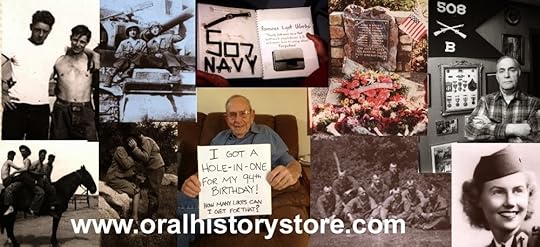 Visit the Oral History Store
Visit the Oral History Store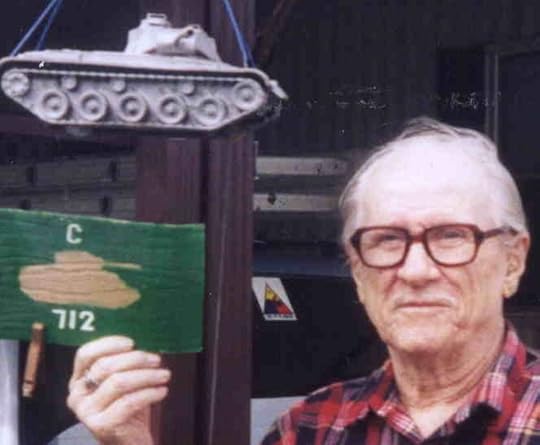 Jack Sheppard
Jack Sheppard
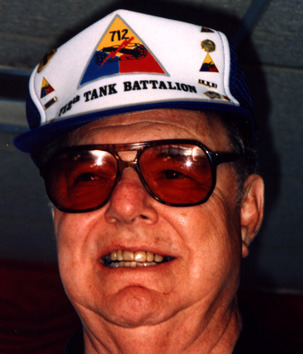 Reuben Goldstein
Reuben Goldstein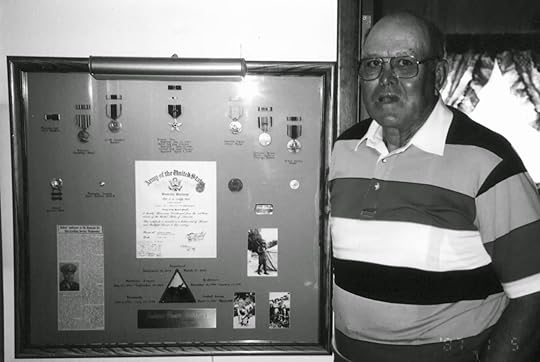 Big Andy
Big Andy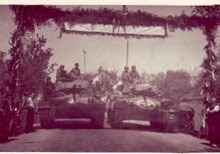
(My Monuments Men, Part 1)
Published on February 25, 2014 05:54
February 21, 2014
A Son of the American Revolution
 Jacobus Swartwout
Jacobus SwartwoutThe Rev. Edmund R. Laine of Stockbridge, Mass., was a member of the Sons of the American Revolution, having been a descendant of Private Jacob Laine, a Minute Man in Colonel Jacobus Swartwout's Dutchess County Regiment of the New York Militia. Following are the entries from the week of Jan. 12-18, 1942, from Edmund Laine's diary:
 Jan. 12, 1942
Jan. 12, 1942Monday, Jan. 12, 1942: Very cold, sunny from 10 a.m. Up 12:30, shaved. E. [Edward L. Forrest] not feeling well. Has same attack I had - home from Bank - 4 & to bed. Miss F. [Jessica French, Laine's housekeeper] phoned Mrs. Eddie Pilling about supper tonight. Read "Times" & "Eagle" [the Berkshire Eagle] & dusted desk in study. 5 - changed clothes. Read in "S.A.R. Mag." Rev. E.H. Nichols arrived - 5:35. 6 - over to Parish House with him - supper to organize a Galahad Club - he spoke & E. Sedgwick also - back to Rectory - 9:30. Talked with him in study till 10:45. He to bed. I had tomato juice & junket & bran muffins. To bed - 12:15.
 Jan. 13, 1942 Tuesday, Jan. 13, 1942: Cold, but not so bad as last few days. Up 7:15. Breakfast - 8 with Rev. E.J.H. Nichols - to see church with him - he left 9:05. 10 - in car with C.M. to Pittsfield (haircut, got watch at Whitings, Bank, Denno's - got pen - to House of Mercy to see Mrs. Geo. Hall) - back 1. Had sandwiches and tomato juice. Read "Times." 2:30 - news. Read "Eagle" 3:10 - Rev. J.V. Butler phoned from Springfield about a Mr. Fallon & Riggs Foundation. To Kimberly's - saw Tommy & called on Miss Canning (out), saw D. Braman - home & then to Library. Read in "Eagle." Grown very cold. 8 - news. E. to First Aid class at Foundation Shop. Read in Wellman's "Enquiries." 9 - Quincy Howe. 10 - Raymond Gram Swing. Had lamb sandwiches & junket. 11 - news.
Jan. 13, 1942 Tuesday, Jan. 13, 1942: Cold, but not so bad as last few days. Up 7:15. Breakfast - 8 with Rev. E.J.H. Nichols - to see church with him - he left 9:05. 10 - in car with C.M. to Pittsfield (haircut, got watch at Whitings, Bank, Denno's - got pen - to House of Mercy to see Mrs. Geo. Hall) - back 1. Had sandwiches and tomato juice. Read "Times." 2:30 - news. Read "Eagle" 3:10 - Rev. J.V. Butler phoned from Springfield about a Mr. Fallon & Riggs Foundation. To Kimberly's - saw Tommy & called on Miss Canning (out), saw D. Braman - home & then to Library. Read in "Eagle." Grown very cold. 8 - news. E. to First Aid class at Foundation Shop. Read in Wellman's "Enquiries." 9 - Quincy Howe. 10 - Raymond Gram Swing. Had lamb sandwiches & junket. 11 - news.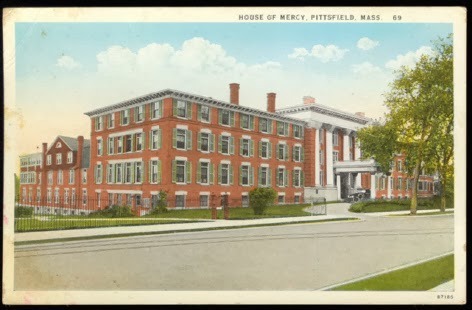 The House of Mercy
The House of Mercy
 January 14, 1942 Wednesday, Jan. 14, 1942: Cold, but milder, sunny, windy. Up 12:10. Wrote note to Brentano's. 2:30 - news. Read "Times." Rec'd Galahad material. Read "Eagle." 4:30 - "Lorenzo Jones." 4:45 - "Young Widder Brown." Miss Elliston phoned about Galahad card party. 5 - "When a Man Marries." Read some stories in "Pushkin." 6 - news. Read on Crusades in Milman's History. Radio music. Miss F. home. E. working in study in Parish House. Wrote press notices for Sunday. Packed my brief case for tomorrow. Wrote note to Arthur Monroe (5th anniv. of Baptism). 9:20 - E. came & studied in study. 9:55 - news. 10 - Raymond Gram Swing. Had tomato juice, junket & custard. Shower bath.
January 14, 1942 Wednesday, Jan. 14, 1942: Cold, but milder, sunny, windy. Up 12:10. Wrote note to Brentano's. 2:30 - news. Read "Times." Rec'd Galahad material. Read "Eagle." 4:30 - "Lorenzo Jones." 4:45 - "Young Widder Brown." Miss Elliston phoned about Galahad card party. 5 - "When a Man Marries." Read some stories in "Pushkin." 6 - news. Read on Crusades in Milman's History. Radio music. Miss F. home. E. working in study in Parish House. Wrote press notices for Sunday. Packed my brief case for tomorrow. Wrote note to Arthur Monroe (5th anniv. of Baptism). 9:20 - E. came & studied in study. 9:55 - news. 10 - Raymond Gram Swing. Had tomato juice, junket & custard. Shower bath. January 15, 1942 Thursday, Jan. 15, 1942: Cold, sunny. Up 7:45, shaved. Breakfast 9. 10:15 - left in car with C.M. [Carlyn Markham] for Springfield - arrivedDiocesan House 11:35. 11:45 - meeting of Department of Christian Education - over 12:55. To Bishop's house for lunch. Back to Diocesan House - 2:30 - meeting of Diocesan Council, over 4:20. Meeting of Scholarship Committee. 4:40 - meeting of Exam. chaplains - over 6:30. Sent C.M. home 5. Back with Rev. G.L. Monks - had dinner at Woronoco Inn - home 9:20. Read "Eagle." Bishop gave me Lawrence Testament. 10 - Raymond Gram Swing. Had tomato juice. 10:45 - news. 11 - to bed.
January 15, 1942 Thursday, Jan. 15, 1942: Cold, sunny. Up 7:45, shaved. Breakfast 9. 10:15 - left in car with C.M. [Carlyn Markham] for Springfield - arrivedDiocesan House 11:35. 11:45 - meeting of Department of Christian Education - over 12:55. To Bishop's house for lunch. Back to Diocesan House - 2:30 - meeting of Diocesan Council, over 4:20. Meeting of Scholarship Committee. 4:40 - meeting of Exam. chaplains - over 6:30. Sent C.M. home 5. Back with Rev. G.L. Monks - had dinner at Woronoco Inn - home 9:20. Read "Eagle." Bishop gave me Lawrence Testament. 10 - Raymond Gram Swing. Had tomato juice. 10:45 - news. 11 - to bed.
 January 16, 1942 Friday, Jan. 16, 1942: Very cold, sunny. Up 8:15, shaved. 9:20 - breakfast. 11 - Laurel Hill meeting in Library - Father Finn spoke - back 12:55. Had roast beef sandwiches & milk. Read "Times." 3:10 - to Library - from there in car to St. Edmund's School - to thank Fr. Jones for taking service on Sunday (out), on to Lenox, got bottle at Peter's - stopped at Dr. Corsen's to say Good Bye to him (he goes into Army tomorrow) - he was not home, 4:55. 5:10 - walked to Mrs. Merwyn's (terribly cold) to talk to her about Galahad Mothers - home 6:20. Eve - E. to Air Raid Center. Fr. Jones phoned, told me of sickness of Dr. Campbell & children. Read in "Amazon Throne." Had junket. Very cold.
January 16, 1942 Friday, Jan. 16, 1942: Very cold, sunny. Up 8:15, shaved. 9:20 - breakfast. 11 - Laurel Hill meeting in Library - Father Finn spoke - back 12:55. Had roast beef sandwiches & milk. Read "Times." 3:10 - to Library - from there in car to St. Edmund's School - to thank Fr. Jones for taking service on Sunday (out), on to Lenox, got bottle at Peter's - stopped at Dr. Corsen's to say Good Bye to him (he goes into Army tomorrow) - he was not home, 4:55. 5:10 - walked to Mrs. Merwyn's (terribly cold) to talk to her about Galahad Mothers - home 6:20. Eve - E. to Air Raid Center. Fr. Jones phoned, told me of sickness of Dr. Campbell & children. Read in "Amazon Throne." Had junket. Very cold. January 17, 1942
January 17, 1942Saturday, Jan. 17, 1942: Very cold, sunny (5 below zero 8 a.m.). Up 11:10. Paid light bill. Read "Liv. Ch." & "Times." Sorted out old copies of "Liv. Ch." & made pile of "Joint Ordination" material. Listened to Act. 2 of "Lohengrin" from Met. Opera. 3:40 - Frank Punderson phoned. Read "Eagle." 4:30 - to church, acolyte rehearsal (M. Hoffmann, A. McCann, R. Hidens, J. Yovin, L. Yovin, B. Pitney) - Mrs. Derrick & Mrs. Merwyn helped - then to Parish House for outfitting, back 5:45. 6 - news. Eleanor Dusenbury in for hymns. E. to Occ. Club. [Occidental Club]. Read in "Amazon Throne." Worked on sermon till 9:45. Had junket & tomato juice. Shower bath.
 January 18, 1942Sunday, Jan. 18, 1942 (Epiphany 2): Fairly cold, sunny. Up 7:10, shaved. 8 - Holy Com. (2) 9:15 - S. Lee - Gospel of day - back 10. Indo Sunday School. 11 - Stockbridge - "Overcoming Discouragement" (21 min.) Quite mild. 1:30 - to S. Lee - took flowers to & prayed with Mrs. Dora Fenn (dying), left jelly at Miss Ball's - home - then on to Mrs. Merwin's (about Galahad mothers) - home 2:10. E. to MacLaren's for First Aid practice. Read "Times." Radio music. Thawing. 3 - N.Y. Symphony Orch. 5 - Met. Opera auditions. 5:45 - Wm. L. Shirer. E. listened too. Wrote letter to Mr. Nobbs. 6 - news. E. to lecture by Vincent Scheen in Pittsfield with Bramans. 7:25 - Mrs. Merwin phoned. 7:30 - news. 8:30 - "One Man's Family." Wrote letter to Miss E. Rice. 9 - Ford Hour (Rose Brosanti*, soprano). Had junket & orange ice. Shower bath. 10:45 - phone Mrs. D. Fenn of S. Lee dead.
January 18, 1942Sunday, Jan. 18, 1942 (Epiphany 2): Fairly cold, sunny. Up 7:10, shaved. 8 - Holy Com. (2) 9:15 - S. Lee - Gospel of day - back 10. Indo Sunday School. 11 - Stockbridge - "Overcoming Discouragement" (21 min.) Quite mild. 1:30 - to S. Lee - took flowers to & prayed with Mrs. Dora Fenn (dying), left jelly at Miss Ball's - home - then on to Mrs. Merwin's (about Galahad mothers) - home 2:10. E. to MacLaren's for First Aid practice. Read "Times." Radio music. Thawing. 3 - N.Y. Symphony Orch. 5 - Met. Opera auditions. 5:45 - Wm. L. Shirer. E. listened too. Wrote letter to Mr. Nobbs. 6 - news. E. to lecture by Vincent Scheen in Pittsfield with Bramans. 7:25 - Mrs. Merwin phoned. 7:30 - news. 8:30 - "One Man's Family." Wrote letter to Miss E. Rice. 9 - Ford Hour (Rose Brosanti*, soprano). Had junket & orange ice. Shower bath. 10:45 - phone Mrs. D. Fenn of S. Lee dead.*This is obviously wrong, but I can't make out the name. If anybody knows who the soprano was, please let me know via comment or email!
earlier diary entries (from Dec. 1, 1941 - Jan. 11, 1942.
 Visit the Oral History Store
Visit the Oral History Store
Published on February 21, 2014 21:25
February 6, 2014
My Monuments Men
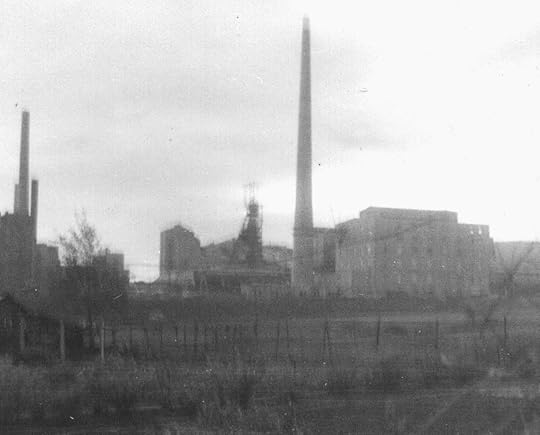 The Merkers Salt Mine
The Merkers Salt MineForrest Dixon and Bill Reiff were having a conversation at the January 1995 "mini-reunion" of the 712th Tank Battalion in Bradenton, Fla., when the subject of the Merkers salt mine came up. Almost 20 years later, the mine plays a prominent role in the new movie and bestselling book "The Monuments Men."
"They have a column in the Detroit News where you ask a question and they answer it," said Dixon, who was the battalion's maintenance officer, "and somebody asked, 'Which was the largest robbery, the Brinks at Boston ..."
"Or the 357th Infantry at Merkers," Dr. Reiff, one of the battalion's two medical officers, interjected ...
"or the Great Train robbery in Britain?" Dixon completed his sentence. "And the fellow came back and said which was the largest. But the largest of all time was the five tons of gold that was robbed ... or removed ... from the Merkers salt mine."
Dixon seemed lost in thought for a moment, and then said to Doc Reiff, "When you went down in the Merkers mine, was the door of the first vault blown open?"
"Here we go again!" Reiff said. "I was just telling Aaron, I wish we had started this 30 years ago, because I think I just subconsciously blotted a lot of that stuff out of my mind. I was there when we picked up these prisoners that had been starved. That's when I got my picture in the Stars & Stripes. Somebody in our outfit said that I bawled him out for giving them candy, but as I was telling Aaron, I guess I subconsciously blotted it out."
"Well, you know, on that Merkers salt mine," Dixon said, "it came out a couple of years later that there was five tons of gold missing."
"Every time we went in the elevator," Reiff said, "when we took the trailer, we had to sign for every bar. We had little jeep trailers, and we had to account for every dang one, sign for each one separately. After talking about it, as I remember, that was a little scary, 600 meters down in the mine."
"How far down?" Dixon asked.
"Six hundred meters, wasn't it?"
"I don't know. I thought it was close to 2,000 feet."
"Six times three is 18, 1,800 feet. We can't start an argument."
"One article about the Merkers salt mine said there were 30 miles of tunnels," Dixon said, "and I'm sure that whoever hit the computer hit the decimal point in the wrong place. I think it was more like three miles of tunnels. Did you see a lot of tunnels when you were down there?"
"Yes," Reiff said. "My family is miners [Dr. Reiff was born in Muskogie, Okla.], I mean, it wasn't strange to me. Those things are not miles long."
"I remember the one big drill, on the very end where the gold was, and they couldn't get that door open," Dixon said. "And there were vault doors on the other side tunnels, and there was art and paintings. The fourth one had sculpture. And there were others. And two million books."
Dixon was one of the first officers to go down in the mine. In fact, it was he who was tasked with rousing the burgomeister and ordering him to get the steam engine started for the elevator, which had two stages, to descend in into the mine in the morning, when all manner of brass was due to arrive. He was interviewed in a documentary about the treasures in the mine and the interviewer asked him what he thought about going down into the mine. He said he expected at any moment to go right back out the top because he thought the shaft would be rigged to explode.
"The area was only lit where we were," he said as we sat around the table in the hospitality room."Apparently that steam turbine that we got going during the night, that operated the ventilation and the elevator and everything. So the whole thing wasn't lit up, just where we were, so I had no idea. Later they said there was five million missing."
According to the book "Documentary ... A Vanishing Cache of Nazi Gold," by Joseph Sprouse, the contents of the Merkers mine were recorded as "3,682 bags of German currency, 80 bags of foreign currency, 8,307 gold bars, 55 boxes of gold bullion, 3,326 bags of gold coins, 63 bags of silver, 1 bag of platinum bars, 8 bags of gold rings, 207 bags and containers of SS loot, and 400 tons of artwork."
The gold rings came from victims of the Holocaust, as did the mountains of spectacles and row after row of suitcases that Forrest Dixon witnessed.
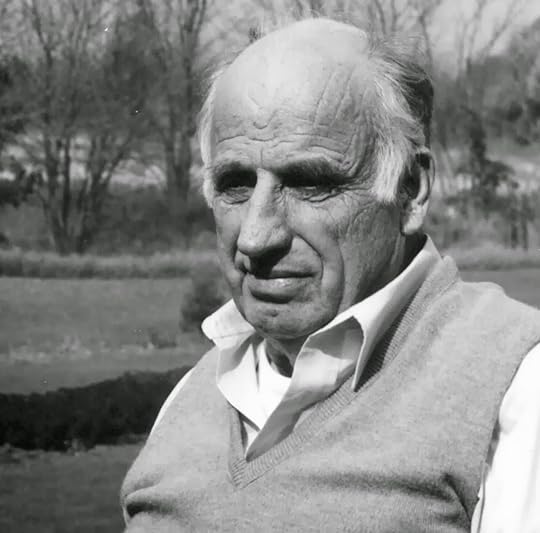 Forrest Dixon
Forrest Dixon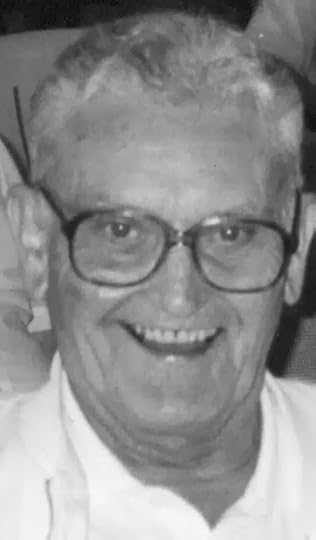 William Reiff
William Reiff
 For more great stories, visit the Oral History Store
For more great stories, visit the Oral History Store
Published on February 06, 2014 20:27
My Monuments Men, Part 1
 The Merkers Salt Mine
The Merkers Salt MineForrest Dixon and Bill Reiff were having a conversation at the January 1995 "mini-reunion" of the 712th Tank Battalion in Bradenton, Fla., when the subject of the Merkers salt mine came up. Almost 20 years later, the mine plays a prominent role in the new movie and bestselling book "The Monuments Men."
They have a column in the Detroit News where you ask a question and they answer it," said Dixon, who was the battalion's maintenance officer, "and somebody asked, 'Which was the largest robbery, the Brinks at Boston ..."
"Or the 357th Infantry at Merkers," Dr. Reiff, one of the battalion's two medical officers, interjected ...
"or the Great Train robbery in Britain?" Dixon completed his sentence. "And the fellow came back and said which was the largest. But the largest of all time was the five tons of gold that was robbed ... or removed ... from the Merkers salt mine."
Dixon seemed lost in thought for a moment, and then said to Doc Reiff, "When you went down in the Merkers mine, was the door of the first vault blown open?"
"Here we go again!" Reiff said. "I was just telling Aaron, I wish we had started this 30 years ago, because I think I just subconsciously blotted a lot of that stuff out of my mind. I was there when we picked up these prisoners that had been starved. That's when I got my picture in the Stars & Stripes. Somebody in our outfit said that I bawled him out for giving them candy, but as I was telling Aaron, I guess I subconsciously blotted it out."
"Well, you know, on that Merkers salt mine," Dixon said, "it came out a couple of years later that there was five tons of gold missing."
"Every time we went in the elevator," Reiff said, "when we took the trailer, we had to sign for every bar. We had little jeep trailers, and we had to account for every dang one, sign for each one separately. After talking about it, as I remember, that was a little scary, 600 meters down in the mine."
"How far down?" Dixon asked.
"Six hundred meters, wasn't it?"
"I don't know. I thought it was close to 2,000 feet."
"Six times three is 18, 1,800 feet. We can't start an argument."
"One article about the Merkers salt mine said there were 30 miles of tunnels," Dixon said, "and I'm sure that whoever hit the computer hit the decimal point in the wrong place. I think it was more like three miles of tunnels. Did you see a lot of tunnels when you were down there?"
"Yes," Reiff said. "My family is miners [Dr. Reiff was born in Muskogie, Okla.], I mean, it wasn't strange to me. Those things are not miles long."
"I remember the one big drill, on the very end where the gold was, and they couldn't get that door open," Dixon said. "And there were vault doors on the other side tunnels, and there was art and paintings. The fourth one had sculpture. And there were others. And two million books."
Dixon was one of the first officers to go down in the mine. In fact, it was he who was tasked with rousing the burgomeister and ordering him to get the steam engine started for the elevator, which had two stages, to descend in into the mine in the morning, when all manner of brass was due to arrive. He was interviewed in a documentary about the treasures in the mine and the interviewer asked him what he thought about going down into the mine. He said he expected at any moment to go right back out the top because he thought the shaft would be rigged to explode.
"The area was only lit where we were," he said as we sat around the table in the hospitality room."Apparently that steam turbine that we got going during the night, that operated the ventilation and the elevator and everything. So the whole thing wasn't lit up, just where we were, so I had no idea. Later they said there was five million missing."
According to the book "Documentary ... A Vanishing Cache of Nazi Gold," by Joseph Sprouse, the contents of the Merkers mine were recorded as "3,682 bags of German currency, 80 bags of foreign currency, 8,307 gold bars, 55 boxes of gold bullion, 3,326 bags of gold coins, 63 bags of silver, 1 bag of platinum bars, 8 bags of gold rings, 207 bags and containers of SS loot, and 400 tons of artwork."
The gold rings came from victims of the Holocaust, as did the mountains of spectacles and row after row of suitcases that Forrest Dixon witnessed.
 Forrest Dixon
Forrest Dixon William Reiff
William Reiff
 For more great stories, visit the Oral History Store(Coming soon: My Monuments Men, Part 2)
For more great stories, visit the Oral History Store(Coming soon: My Monuments Men, Part 2)
Published on February 06, 2014 20:27
January 21, 2014
The stuff that dreams are made of
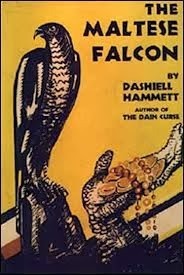
More from the diary of the Rev. Edmund Randolph Laine of Stockbridge, Mass. From Jan. 5-11, 1942. When I began transcribing the diary entries, from Laine's handwriting into something a bit more legible, more than a decade ago, many of the Internet resources were not available, and with a couple of exceptions, such as his mention on April 3, 1945, of Philip Bonsal's book "When the French Were Here," I didn't research the books or radio shows he mentions.
Now, with resources such as Project Gutenberg (which already was around when I started doing this), the Internet Archive and Old Time Radio Classics, I'm able to put sounds and images that bring the diary to life. That said, the radio excerpts are generic in nature, rather than the broadcasts of the date they were mentioned, although some of the shows have the air dates of the recordings, and I hope to get lucky in future entries. I'll point it out when I do.
Previous entries from the diary of the Rev. Edmund Randolph Laine:
December 29, 1941-Jan. 4, 1942
December 22-December 28, 1941
December 15-December 21, 1941
December 8-December 14, 1941
December 1-December 7, 1941
 January 5, 1942
January 5, 1942Monday, Jan. 5, 1942: Gray, cold, snowing a.m., some sun at 3. Up 12:15, shaved. Radio - news. Eleanor Dusenbury phoned about tea at annual W. Aux. meeting. Phoned Mrs. Davidson about press notices for meeting. 1:10 - to bank. Cut nails. Read "Eagle" & in Hammett's "Maltese Falcon." Read "Times" & "Converted Catholic." 4:15 - to call on Mrs. Stinson at the Actons - back 4. Read in Maltese Falcon in study. E - read "Eagle" there. 6 - news. Eve - E. to First Aid Class. Destroyed some old receipts. Mrs. Kimberly phoned names of sponsors for baptism tomorrow. Finished "Maltese Falcon." Radio music. 9 - Quincy Howe. Had sandwiches & oranges. Wrote book review. 11 - News. Shower bath.
 January 6, 1942 Tuesday, Jan. 6, 1942: (Tuesday - Epiphany) Very cold (coldest of winter so far), sunny. Up 9:15, shaved. Radio news. 11 - Holy Com. (9). Sent Mrs. Derrick some medals. Mrs. Kimberly phoned. Read "Times."Made out baptismal certificates. 1:30 - "Vic & Sade." 1:45 - "Road of Life." 2:30 - had tomato soup & liverwurst sandwiches. Dozed in chair in study till 4:15. Read "Eagle." Fr. Jones phoned. 4:30 - changed clothes. 4:50 - to church. 5 - Baptism of Kimberly children - then to Kimberlys - back 6:30. 7:15 - to dinner at the Kimberlys (Mr. & Mrs. Dwight, Mrs. & Mrs. Raphael[?], Dr. & Mrs. Schroeder, Mrs. Schermerhorn) - home 10:15. Very cold. Made entries in Parish Register. Ate two oranges. E. to Lodge. 11 - News.
January 6, 1942 Tuesday, Jan. 6, 1942: (Tuesday - Epiphany) Very cold (coldest of winter so far), sunny. Up 9:15, shaved. Radio news. 11 - Holy Com. (9). Sent Mrs. Derrick some medals. Mrs. Kimberly phoned. Read "Times."Made out baptismal certificates. 1:30 - "Vic & Sade." 1:45 - "Road of Life." 2:30 - had tomato soup & liverwurst sandwiches. Dozed in chair in study till 4:15. Read "Eagle." Fr. Jones phoned. 4:30 - changed clothes. 4:50 - to church. 5 - Baptism of Kimberly children - then to Kimberlys - back 6:30. 7:15 - to dinner at the Kimberlys (Mr. & Mrs. Dwight, Mrs. & Mrs. Raphael[?], Dr. & Mrs. Schroeder, Mrs. Schermerhorn) - home 10:15. Very cold. Made entries in Parish Register. Ate two oranges. E. to Lodge. 11 - News.
 January 7, 1942Wednesday, Jan. 7, 1942: Very cold, sunny. Up 11:15, shaved. Wrote 3 letters (Mrs. Frelinghuysen, Jr., Dr. Kimberly & Rev. Dr. Stowe). Read "Times." 3 - "Against the Storm." 3:15 - "MaPerkins." To church - C.M. clearing out Christmas decorations - then to Library - on to call on Mrs. Drake & Mrs. James at Buck's - back 6:10. 6:15 - news. Wrote letter to Mr. Hans Johnson for Sir Galahad literature. 8 - Donald Wood came to see about being a leader in the Galahad Order - went 9:40. 10 - Raymond Gram Swing. Wrote note to Mr. Steve Burghardt about his receiving Masonic medal. Had corn beef sandwiches & oranges. Wrote 2 letters (Mrs. Acton & Mrs. Stinson). 11 - news.
January 7, 1942Wednesday, Jan. 7, 1942: Very cold, sunny. Up 11:15, shaved. Wrote 3 letters (Mrs. Frelinghuysen, Jr., Dr. Kimberly & Rev. Dr. Stowe). Read "Times." 3 - "Against the Storm." 3:15 - "MaPerkins." To church - C.M. clearing out Christmas decorations - then to Library - on to call on Mrs. Drake & Mrs. James at Buck's - back 6:10. 6:15 - news. Wrote letter to Mr. Hans Johnson for Sir Galahad literature. 8 - Donald Wood came to see about being a leader in the Galahad Order - went 9:40. 10 - Raymond Gram Swing. Wrote note to Mr. Steve Burghardt about his receiving Masonic medal. Had corn beef sandwiches & oranges. Wrote 2 letters (Mrs. Acton & Mrs. Stinson). 11 - news. January 8, 1942 Thursday, Jan. 8, 1942: Very cold (12 below zero), sunny. Up 11:15, shaved, shower bath. Had creamed corn beef for breakfast. Read "Times." Wrote press notices. 2:45 - dressed. 3 - annual meeting of Woman's Auxiliary - Miss Canning elected Pres. - arranged for Galahad Supper - Mon. eve. 5 - walked & called on Father Finn - then to Shaw's Garage - saw Jimmie about Galahad - walked home 5:45. 6 - news. Very cold - 2 below zero.Fr. Finn phoned. E. to Lodge installation. Wrote 2 letters (Mrs. H. M. Parsons & Rev. E.H. Nichols). 8 - Fannie Brice. 8:30 - Henry Aldrich. 9 - Quincy Howe. Had oranges. Terribly cold. 10 - R.G. Swing. Ate oranges. 10:30 - to bed.
January 8, 1942 Thursday, Jan. 8, 1942: Very cold (12 below zero), sunny. Up 11:15, shaved, shower bath. Had creamed corn beef for breakfast. Read "Times." Wrote press notices. 2:45 - dressed. 3 - annual meeting of Woman's Auxiliary - Miss Canning elected Pres. - arranged for Galahad Supper - Mon. eve. 5 - walked & called on Father Finn - then to Shaw's Garage - saw Jimmie about Galahad - walked home 5:45. 6 - news. Very cold - 2 below zero.Fr. Finn phoned. E. to Lodge installation. Wrote 2 letters (Mrs. H. M. Parsons & Rev. E.H. Nichols). 8 - Fannie Brice. 8:30 - Henry Aldrich. 9 - Quincy Howe. Had oranges. Terribly cold. 10 - R.G. Swing. Ate oranges. 10:30 - to bed.Fanny Brice
 January 9, 1942 Friday, Jan. 9, 1942: Was very sick all night, vomited at 2 a.m. & 6 a.m. Ate nothing all day. Dr. Campbell came - 4 - I have intestinal grippe. Slept much - in bed all day. Miss F. & E. made my bed at 9:30 & I slept for night. Very cold.
January 9, 1942 Friday, Jan. 9, 1942: Was very sick all night, vomited at 2 a.m. & 6 a.m. Ate nothing all day. Dr. Campbell came - 4 - I have intestinal grippe. Slept much - in bed all day. Miss F. & E. made my bed at 9:30 & I slept for night. Very cold. January 10, 1942 Saturday, Jan. 10, 1942: Still sick in bed - very cold - 6 below zero at 9 a.m. Slept hard most of a.m. Dr. Campbell came noon. 1:30 - had some milk and crackers. Slept. Read "Times" & "Liv. Ch." in bed. 7 - had dropped eggs & toast. E. to Occ. Club. Very cold. Got up & sat in Study, wrapped up. Miss F. got Fr. Jones & Mr. Barnes to take services for tomorrow. Read in Sir Philip Gibbs' "Since Then."(pretty terrible.) 10 - had junket, eggs & toast. Miss F. made bed. 10:30 - back to bed.
January 10, 1942 Saturday, Jan. 10, 1942: Still sick in bed - very cold - 6 below zero at 9 a.m. Slept hard most of a.m. Dr. Campbell came noon. 1:30 - had some milk and crackers. Slept. Read "Times" & "Liv. Ch." in bed. 7 - had dropped eggs & toast. E. to Occ. Club. Very cold. Got up & sat in Study, wrapped up. Miss F. got Fr. Jones & Mr. Barnes to take services for tomorrow. Read in Sir Philip Gibbs' "Since Then."(pretty terrible.) 10 - had junket, eggs & toast. Miss F. made bed. 10:30 - back to bed. January 11, 1942 Sunday, Jan. 11, 1942: (Epiphany I) Very cold, snowed at times, very bleak, gray, below zero. Feeling better. Stayed in bed till 3:45. Had some breakfast -- 11. Fr. Jones of St. Edmund's took Stockbridge service. Read "Times" in bed, Miss F. sick with same malady, Nellie French in to see her. Up 3:45, shaved, shower bath - dressed -downstairs - first time since Thurs. night. 5:45 - Wm. L. Shirer. 6 - news. Helped Miss F. make my bed. E. took 3/4 hour at Air Raid Station. Wrote letter of congratulation to Bp. (5th Cons. ann. - Tues.) Miss F. to bed 8 - sick. E. studied first aid book in kitchen. I sat in study & read in Girard's "Face to Face WithKaiserism." 9 - Ford Hour (pianist). 10 - had junket, milk & crackers. Not feeling too well. Cold is very excessive. 10:30 - to bed.
January 11, 1942 Sunday, Jan. 11, 1942: (Epiphany I) Very cold, snowed at times, very bleak, gray, below zero. Feeling better. Stayed in bed till 3:45. Had some breakfast -- 11. Fr. Jones of St. Edmund's took Stockbridge service. Read "Times" in bed, Miss F. sick with same malady, Nellie French in to see her. Up 3:45, shaved, shower bath - dressed -downstairs - first time since Thurs. night. 5:45 - Wm. L. Shirer. 6 - news. Helped Miss F. make my bed. E. took 3/4 hour at Air Raid Station. Wrote letter of congratulation to Bp. (5th Cons. ann. - Tues.) Miss F. to bed 8 - sick. E. studied first aid book in kitchen. I sat in study & read in Girard's "Face to Face WithKaiserism." 9 - Ford Hour (pianist). 10 - had junket, milk & crackers. Not feeling too well. Cold is very excessive. 10:30 - to bed.
Published on January 21, 2014 16:08
January 13, 2014
A Last Letter Home
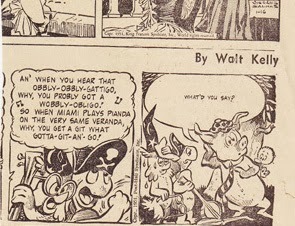
"Obbly-obbly-gattigo, why, you probly got a wobbly-obligo!" Like listening to the "B" side of an old 45 rpm record, I often glance at the flip side of old newspaper clippings. Last week John Caruso, my co-author on the forthcoming book "Semper Fi, Padre," or really it's more like I'm his co-author, showed me a faded clipping from a Hartford, Connecticut, newspaper that contained the text of his brother Mathew's last letter from Korea to his father, Michael Caruso. The flip side of the article contained the latter half of three comics of the day, one of which was one of my all-time favorites, Pogo, by Walt Kelly. I have no idea what this particular strip was about, and not because the first two panels were missing either. In the first frame, which would have been the third of that day's strip, Howland Owl, with his wizard's cap, and Cherchy la Femme the turtle, with his pirate cap, seem to be reciting something musical in nature, as evidenced by the presence of a couple of musical notes. "So when Miami plays pianda on the very same veranda, why, you get a git what gotta-git-an-go!" In the next and final panel, the character Porky-pine the pig, leans in and says "What'd you say?" while Howland wipes sweat from his brow and Cherchy leans on what appears to be a musical instrument.
The comic above Pogo contains the date 1-16 but not the year. It's likely 1950, which means it would have been barely a month after Matt Caruso was killed in Korea.
The article is titled "Good afternoon/ A personal chat with Art McGinley," who was the sports editor of the Hartford Courant.
"Dear Pop," Matt's letter begins, "Please don't worry about me for I am taking good care of myself. I am confident that some day I will come back to all of you.
"I have an awful lot to live for -- there will be my wife and baby waiting for me when I get back to the States.
"Of course I can't tell how long it will be before we are home again, but I do know that I will be one of the many guys aboard the ship heading back home when it is all over.
"I have enclosed a couple of pictures taken by a photographer at Inchon just before we left for here. I wish you would send me one of yourself, for the only ones I have of you and the family are in my album back home.
"I still am working for a chaplain, only this time it is a Catholic priest I am with. He really is a wonderful man and we get along fine. Every day when it is possible he says Mass for his boys and I have seen him give Holy Communion and administer the last rites under heavy machine gun fire by the enemy.
"My job is to do the administrative and clerical work for him, write letters of condolence to the families of boys who have died out here, aid the wounded and assist him at Mass.
"There have been plenty of times we have said the Rosary together in our foxhole. No sir, Pop, no guy could be his equal.
"My wife is a wonderful person -- she has made me the happiest guy in the world."
"Love, Mathew."
Actually, the newspaper misspelled Mathew's name, printing the more common version with two t's. Matt Caruso died saving the life of the Rev. Cornelius "Connie" Griffin. As machine gun fire penetrated the side of the ambulance in which Father Griffin was administering the last rites to a dying Marine during the breakout from the Chosin Reservoir, Matt, according to most accounts, threw the chaplain onto the floor of the ambulance and shielded him with his body. Matt was killed and Father Griffin was wounded but survived.
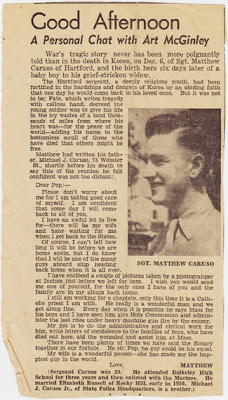 and the flip side:
and the flip side: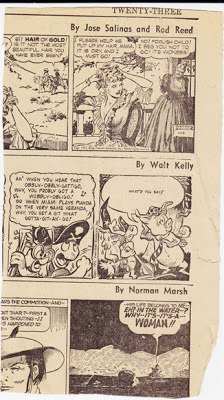 The comic strip on top is "The Cisco Kid" (and to think I was a member of the Cisco Kid fan club in junior high school), while the comic on the bottom could be Dan Hale, by Norman Marsh, whose work, according to Comiclopedia, influenced the comic strip Dick Tracy.
The comic strip on top is "The Cisco Kid" (and to think I was a member of the Cisco Kid fan club in junior high school), while the comic on the bottom could be Dan Hale, by Norman Marsh, whose work, according to Comiclopedia, influenced the comic strip Dick Tracy.
Published on January 13, 2014 07:26
December 25, 2013
Lieutenant Lippincott's Canteen: A Christmas Reunion
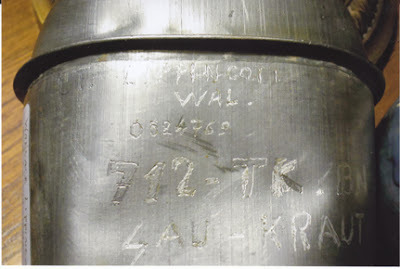 Lt. Wallace Lippincott Jr.'s canteen
Lt. Wallace Lippincott Jr.'s canteen"By the way."I was on the phone with Vern Schmidt, a World War II veteran who lives in Fresno, California, for about a half-hour a couple of weeks ago and was about to hang up when he said "By the way."By the way, what?By the way, Vern said, on his last visit to Europe, his friend Norbert Morbe, who lives in Luxembourg and is an avid collector of World War II artifacts, gave him a canteen. The canteen had a name scratched onto it, "Lt. Wal. Lippincott, 712 Tank Bn.," along with a serial number and what appears to be the word "Sauer Kraut." Norbert knew that Lt. Wallace Lippincott Jr. was killed in the Battle of the Bulge, and asked Vern to try and locate his family so the canteen could be returned. Vern had no luck searching the Internet. Did I know of a way of contacting the family?Fifteen years ago I tried to locate Lieutenant Lippincott's family. I found a record of a donation made in his memory to Swarthmore College by his widow, who remarried and had a different last name. At the time I contacted the Swarthmore alumni association, they contacted the widow and she sent me a photo which I've since misplaced. I've long since lost touch with her.By the way, did I mention I'm an email pack rat? Five years later Ted Nobles contacted me and said he was Lieutenant Lippincott's great-nephew and was working on a family genealogy. I sent him copies of some of the interviews I did with veterans of Lippincott's platoon. But Ted had moved and changed his email since then. Then I found him on Facebook.I put Ted in touch with Vern, they had a long talk, and Ted said he was thrilled about the discovery. Vern sent him the canteen, and Ted planned to surprise his family with it on Christmas Day.
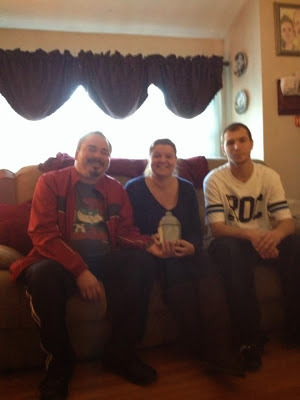 From left, Ted Nobles, Michelle Nobles Rutter, Lt. Lippincott's great-niece, and her son Oliver.This photo arrived on Christmas Day, along with a note from Lieutenant Lippincott's great-niece.
From left, Ted Nobles, Michelle Nobles Rutter, Lt. Lippincott's great-niece, and her son Oliver.This photo arrived on Christmas Day, along with a note from Lieutenant Lippincott's great-niece.The photo shows "my brother Ted, myself and my younger son Oliver," she wrote. "I am the first grandchild born unto our mother Martha Wallace Zeallor who was the niece of Wallace Jr. My brother Ted is the second grandchild . Martha Wallace Lippincott was my grandmother and only sister to Wallace Jr. As you know our mother and grandmother have passed and this gift is so appreciated. I was just talking about Wallace last night and then my brother shows up at my house to give me the news about the canteen. I got goose bumps and it was a great feeling to have glided my fingers across the etching of his name he engraved himself in the battle. Thank you from the bottom of my heart."
Now look at who's getting goose bumps.
Incidentally, my father and Lieutenant Lippincott were both replacements in A Company of the 712th Tank Battalion, and although they never met, they had a connection. My dad, Lt. Maurice Elson, joined the 712th in Normandy. He told his sergeant, Jule Braatz, that he trained as an infantry officer and knew little about tanks but it showed up on his "MOS," or service qualifications, because he attended a tank demonstration. Braatz gave my father a tour of the tank and told him to be careful getting down. My dad jumped off the tank, twisted his ankle, and wound up in an aid station. His platoon was sent on a mission without him.The next day he hitched a ride to the front in the bog, or bow gunner's seat, of a tank in another platoon. When the platoon stopped, he got out of the tank and was wounded by shrapnel.Braatz told me this story at the first reunion I attended, in 1987. He said the story was second hand because the driver my father hitched a ride with, Quentin "Pine Valley" Bynum, was later killed.Lieutenant Lippincott joined the battalion a couple of weeks before the Battle of the Bulge. His driver the day he was killed was Pine Valley Bynum. Bynum and the tank's loader, Pfc. Frank Shagonabe, also were killed.Two of the tank's crew members escaped unscathed, physically at least. Roy R. La Pish, whose nickname was Frenchie, of Pottstown, Pa., stayed in the Army after the war. His name can be found on the Vietnam Wall. For Hilton Chiasson of Thibodeau, La., that was the fifth tank he had knocked out, according to Phil Eckhart, another member of the platoon. Chiasson was so shaken that he was relieved of having to serve in a tank. One day I tried to look him up and I reached his widow, who said in a thick Cajun accent that her husband never spoke about the war.Shagonabe was a Native American from northern Michigan. In an event eerily similar to the return of the canteen to Lippincott's family, an article appeared in the Muskegon Chronicle a few years ago. It told how Shagonabe's effects were sent to his employer because no family member could be found, but eventually someone was able to locate Shagonabe's half-brother. The article had wonderful photos of the reunion. The half-brother, Harlin Shagonabe, has since passed away.
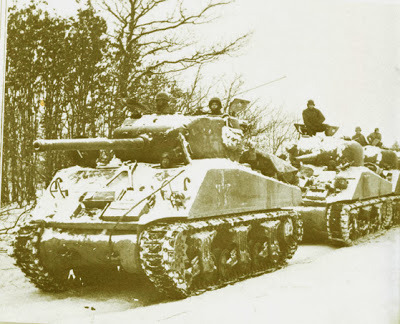 Lt. Wallace Lippincott on the left in the lead tank, Bavigne, Luxembourg, going up into the Battle of the Bulge, a few days before he was killed. This tank was knocked out two days before he was killed. Lippincott was awarded the Silver Star for returning to the tank and putting out the fire. He was killed on Jan. 14, 1945, in Sonlez, Luxembourg.
Lt. Wallace Lippincott on the left in the lead tank, Bavigne, Luxembourg, going up into the Battle of the Bulge, a few days before he was killed. This tank was knocked out two days before he was killed. Lippincott was awarded the Silver Star for returning to the tank and putting out the fire. He was killed on Jan. 14, 1945, in Sonlez, Luxembourg.
Published on December 25, 2013 09:32
December 15, 2013
'England will have her neck wrung like a chicken'
 December 29, 1941
December 29, 1941"When I warned them that Britain would fight on alone whatever they did, their generals told their Prime Minister and his divided Cabinet, 'In three weeks England will have her neck wrung like a chicken.' Some chicken! Some neck!" — Winston Churchill, Ottawa, Dec. 30, 1941
More from the diary of the Rev. Edmund Randolph Laine of St. Paul's Episcopal Church in Stockbridge, Mass. For previous entries:
December 22-December 28, 1941
December 15-December 21, 1941
December 8-December 14, 1941
December 1-December 7, 1941
 December 29, 1941
December 29, 1941December 29, 1941: (Monday) Cold, gray - snowed in night. Up 11:25, shaved (News - noon). Nose hurts. Bp. Lawrence phoned - 12:45. 1:25 to Bank, then to Lenox (Bank & Library) - back 2:35. Made up some accounts. 3:15 - to Library, Rec'd bill from Mr. Stansky for lighting on(?) street tree - phoned Mr. Dwight about it. Phoned Mrs. Davidson. Wrote note of thanks to Mrs. Herzog for calendar. 6 - News. Eve. - E to First Aid Class. Grown very cold - read in Davis' "First Republic." 9 - Rev. J.W. Cooper of Adams phoned. Wrote letter to Bp. Lawrence at his request - to P.O. with it. Read "Times." 10 - RaymondGram Swing. 11 - News.
 December 30, 1941December 30, 1941:(Tuesday) Very cold, sunny. Up noon. Radio News. Shaved. 2:15 to Bank, then to Pittsfield (left watch to be fixed at Whitings', to Library) - back 4. Mrs. Dixson in soliciting for special Red Cross fund. 4:45 - Mrs. Kimberly called to arrange baptism & to give instructions about Air Raids. 5:10 - to tea with Mrs. Hiss at Mrs. Tracy's - Fr. Finn there - walked home with him - 6 D. Braman in. Miss F home, E. in P.H. [parish house] working on Laurel Hill acc'ts. 9 - Quincy Howe, read "Times." 9:30 - "Fibber McGee" 10 - Raymond Gram Swing. Had nuts & oranges. 11 - News. 11:20 - transcription of speech of WinstonChurchill at Ottawa, Can.
December 30, 1941December 30, 1941:(Tuesday) Very cold, sunny. Up noon. Radio News. Shaved. 2:15 to Bank, then to Pittsfield (left watch to be fixed at Whitings', to Library) - back 4. Mrs. Dixson in soliciting for special Red Cross fund. 4:45 - Mrs. Kimberly called to arrange baptism & to give instructions about Air Raids. 5:10 - to tea with Mrs. Hiss at Mrs. Tracy's - Fr. Finn there - walked home with him - 6 D. Braman in. Miss F home, E. in P.H. [parish house] working on Laurel Hill acc'ts. 9 - Quincy Howe, read "Times." 9:30 - "Fibber McGee" 10 - Raymond Gram Swing. Had nuts & oranges. 11 - News. 11:20 - transcription of speech of WinstonChurchill at Ottawa, Can.
 December 31, 1941
December 31, 1941December 31, 1941:(Wednesday) Very cold, sunny. Up 11:30. Mrs. Kimberly phoned changing hour of baptism on Jan. 6. Had creamed corn beef for breakfast. Cleaned desk & put new blotter in pad - did some cleaning in Study & rearranged some books. Made up some acc'ts. Read "Times" & "Eagle". Picked out hymns for to-morrow. 6 - News. Eve. - E. back to Bank after supper. 7:15 - Arthur Hale. Made up yearly household accounts. 8:30 - David Braman & waited for E. - he sat in Study and talked to me till 10. E. back 10:20. 10:40 - E. & D. Braman to midnight show. 11 - News. Wrote outline of talk for Sunrise Prayer Meeting. 11:30 - shower bath.
 January 1, 1942
January 1, 1942January 1, 1942:(Thursday) Cold, gray. Up 6:30, shaved. Coffee 7:40. 8 - Sunrise Prayer Meeting at Cong. Church - C.M. took me - 18 present - spoke on (?) - back 8:05. Breakfast 9:25. Mr. (?) called while I was eating - did not see him. He called 10 - saw him (about Red Cross). Wrote outline of morning sermon. 11 - Holy Com. - service for National Day of Prayer - large cong. - read President Roosevelt'sproclamation - spoke on "For God & Country" (27 min.) - long talk with Shaun Kelly Jr. afterward. Dinner of turkey & champagne. Very gray. Mrs. Davidson in for press notes. Miss F. home - 6:15. Read "Times" & "Eagle" in Study. E. came & read "Eagle" there too. Snowing. 6 - News. Eve. (?) to Church to look for stop watch - found it in my room. 7 - "Amos &Andy" 88 - Fanny Brice. Iceland, Singapore, London, Washington. Read about (?) war. 11 - News.
 January 2, 1942
January 2, 1942January 2, 1942:(Friday) Very warm, breezy, sunny. 9 - rained very hard. Up 11, shaved. Radio News. Miss Tracy called (did not see her). Miss Adams phoned. C.M. dismantled Christmas tree on lawn. 1:30 to Bank. C.M. paid church taxes. 2 - Miss Tracy called. 2:30 - to West Stockbridge to Rev'd. F.S. Eastman's - bot medals & pictures for Sunday School - back 3:45. Growing colder. To see Miss Adams about Women's Auxiliary election - back 5:15. Then to see Miss Canning about being Pres. of Aux. - back 6:15. Eve. - E. to Air Raid Watch. 7:15 - News from London, Borneo & Washington. Wrote & sent list to a Mr. Bedinger (?) Grand Central Station. Wrote letter to R. Procter (sent him Mr. de Gersdorf) (?) 9 - Quincy Howe. To Post Office. Read "Times." 11 - News.
 January 3, 1942
January 3, 1942Jan. 3, 1942:(Saturday) Cold, sunny. Up noon. Letter from Bp. E. brot me (?) Bank. 2 - "L' Elisir D'Amore" from Met. Opera. Read "Times" & "Eagle." E. called on Miss Canning. Rested in chair in Study in twilight.l Grown very cold. 6 - News. Phoned Mrs. Barnes about Galahad Supper - Jan. 14. E. to see Miss Adelaide Miller at Miss Canning's. 4:45 - H.W. Kaltenborn. Wrote 2 letters (Bp. Lawrence & Miss Young). Worked on sermon - picked out hymns. 9:30 - Rochester Civic Orchestra. 9:45 - to Post Office - saw Fr. Finn on way back. Ate orange & 2 tangerines. 11 - News. Shower bath.
 January 4, 1942
January 4, 1942Jan. 4, 1942:(Christmas 2) Snowing, snowed in night too. Up 7:35, shaved. 9:15 - South Lee -- "Epiphany" - back 9:55. 10 - Sunday School, gave out new pins & medals - back 10:30. 11 - Stockbridge - Rev. F.S. Eastman was celebrant, preached on "Year of Our Lord" (15 mins). Turkey for lunch. Took wreath off of front door. E. read "Maltese Falcon" in Study. Read "Times." Dozed in chair while listening to "The Magic Flute." E. out with D. Braman. 5 - Met. Opera auditions. Lights went out for 10 min. 5:45 - W. L. Shirer. 6 - News. Began to read "The Maltese Falcon." 8 - Lloyd Conley called - told me of his marriage - went 8:55. 9 - Ford Hour. Had chicken sandwiches & oranges. E. brot me Schick razor.
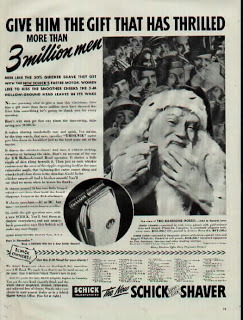
- - -
Published on December 15, 2013 01:46



